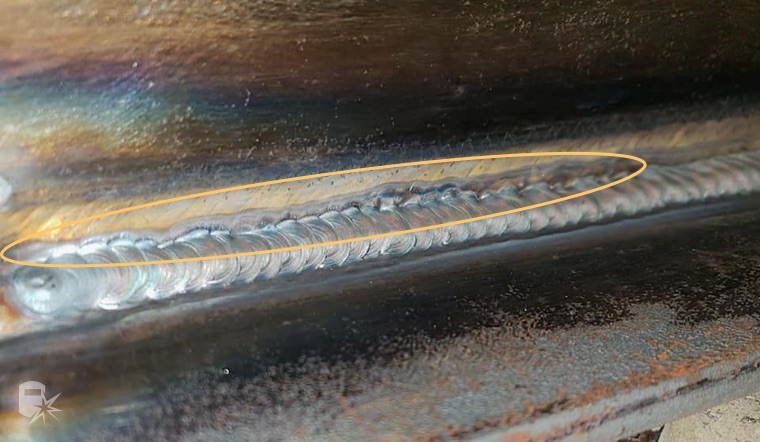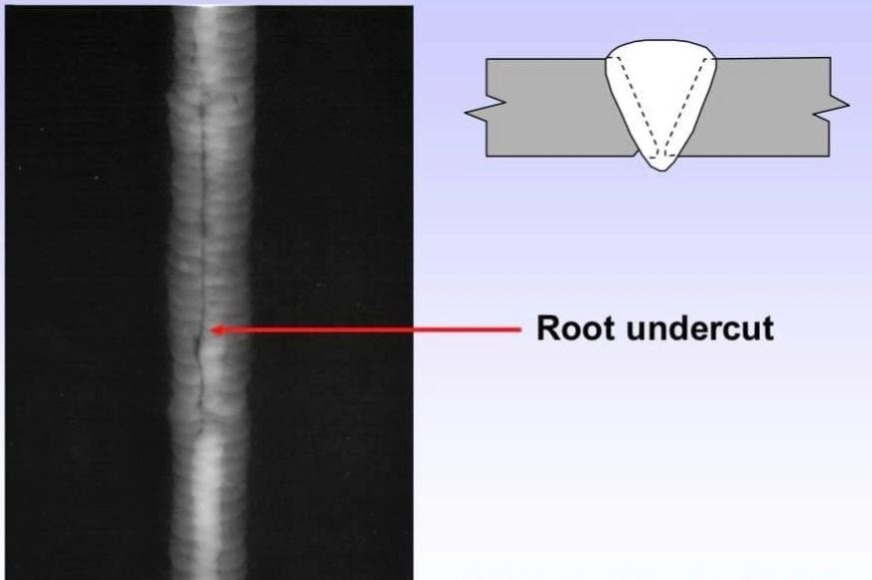Your Full Handbook to Preventing Weld Undercut Like a Pro
Your Full Handbook to Preventing Weld Undercut Like a Pro
Blog Article
Crucial Tips for Welders: Avoiding Undercut Welding and Ensuring Stronger Weld Joints
In the world of welding, attaining durable and solid weld joints is the foundation of creating top notch job. One usual difficulty that welders commonly encounter is undercut welding, which can endanger the stability of the weld joint.

Recognizing Undercut Welding
Undercut welding is an usual welding defect that happens when the weld metal stops working to effectively fill the groove and leads to a groove-like anxiety along the weld grain. This flaw weakens the weld joint, making it at risk to splitting and failing under anxiety. Undercutting can be triggered by various aspects, including too much welding existing, high welding speed, improper electrode angle, incorrect electrode size, and poor welding strategy.
Among the major reasons for undercut welding is an imbalance in between the welding existing and the welding rate. If the welding current is too expensive or the welding speed is as well quickly, the weld steel may not properly fill the groove, bring about damaging. In addition, making use of an electrode that is as well large can lead to a similar result, as the excess metal can not properly stream right into the groove.
To avoid undercut welding, welders must guarantee they are making use of the right welding parameters, maintain an appropriate electrode angle, choose the appropriate electrode size, and technique correct welding methods. By addressing these aspects, welders can reduce the risk of undercutting and create stronger, much more trusted weld joints.
Correct Welding Strategy
Reliable welding technique plays an important duty in ensuring the top quality and honesty of weld joints. Correct welding method includes a mix of accuracy, adherence, and skill to best practices. One essential element of proper welding method is maintaining the right angle and distance in between the welding weapon and the work surface. Welders should likewise pay close focus to the travel speed and warmth input to stop concerns like damaging, porosity, or incomplete fusion.
Additionally, a consistent and constant hand motion is vital for developing strong and sturdy weld joints. Welders ought to go for smooth, consistent motions to make sure also distribution of the weld product. Appropriate manipulation of the welding gun and filler material is also key to accomplishing ideal penetration and combination.
Furthermore, controlling the warmth input and selecting the ideal welding specifications based on the material being bonded are crucial consider achieving high-grade welds - Preventing weld undercut. Welders must follow the advised settings given by welding treatment specs and readjust them as needed based upon the specific needs of the job. By mastering proper welding techniques, welders can considerably enhance the strength and reliability of their weld joints
Picking the Right Electrode
Keeping the proper angle and range between the welding weapon and the workpiece is basic when taking into consideration the value of picking the ideal electrode in welding applications. The selection of electrode plays an important function in figuring out the quality and stamina of the weld joint. Electrodes come in various kinds, each created for specific functions and materials.
Firstly, picking the appropriate electrode diameter is necessary. Thinner electrodes are appropriate for welding slim materials, while thicker electrodes are much better for thicker materials and higher heat applications. Matching the electrode diameter to the thickness of the work surface assists achieve a balanced weld.
Secondly, understanding the product composition of the electrode is essential. Various electrodes are made for welding details materials like steel, stainless steel, aluminum, or cast iron. Utilizing the proper electrode material makes sure excellent combination and minimizes the danger of issues in the Web Site weld.
Finally, taking into consideration the welding setting and strategy is vital when selecting the electrode kind. As an example, particular electrodes are much better fit for upright or above welding placements, while others work well for level or straight settings. Picking the best electrode based on the welding technique enhances the overall weld top quality and honesty.
Preparing the Base Steel
To make certain a successful welding process, what first steps should be taken when preparing the base steel for welding? In addition, any existing weld material or deposit from previous welding should be eliminated to guarantee a tidy surface area for the new weld.

Performing Post-Weld Examinations

After performing these assessments, welders have to contrast the outcomes versus industry standards and task requirements to guarantee that the weld joint satisfies all needed criteria. Any inadequacies or variances uncovered throughout the post-weld inspection should be promptly attended to with proper corrective procedures to guarantee the weld's honesty. By faithfully executing post-weld evaluations and promptly addressing any kind of concerns, welders can promote the high quality and dependability of their work, eventually adding to the safety and security and durability of the welded structures.
Final Thought

To conclude, preventing undercut welding and guaranteeing more powerful weld joints call for a mix of correct welding method, selecting the best electrode, preparing the base steel appropriately, and carrying out post-weld examinations. By comprehending the root causes of undercut welding and applying the Web Site required precautions, welders can create premium weld joints that meet sector standards and make certain the architectural stability of the welded elements.
Undercut welding is an usual welding issue that happens when the weld steel fails to appropriately fill the groove and results in a groove-like anxiety along the weld grain (Preventing weld undercut). Damaging can be created by various variables, consisting of too much welding current, high welding speed, improper electrode angle, incorrect electrode size, and poor welding technique
One of the primary factors for undercut welding is an inequality between the welding current and the welding speed. If the welding current is as well high or the welding speed is also fast, the weld steel may not properly load the groove, leading to undercutting.Preserving the right angle and range between the welding gun and the workpiece is basic when thinking about the importance of selecting the ideal electrode in welding applications.
Report this page